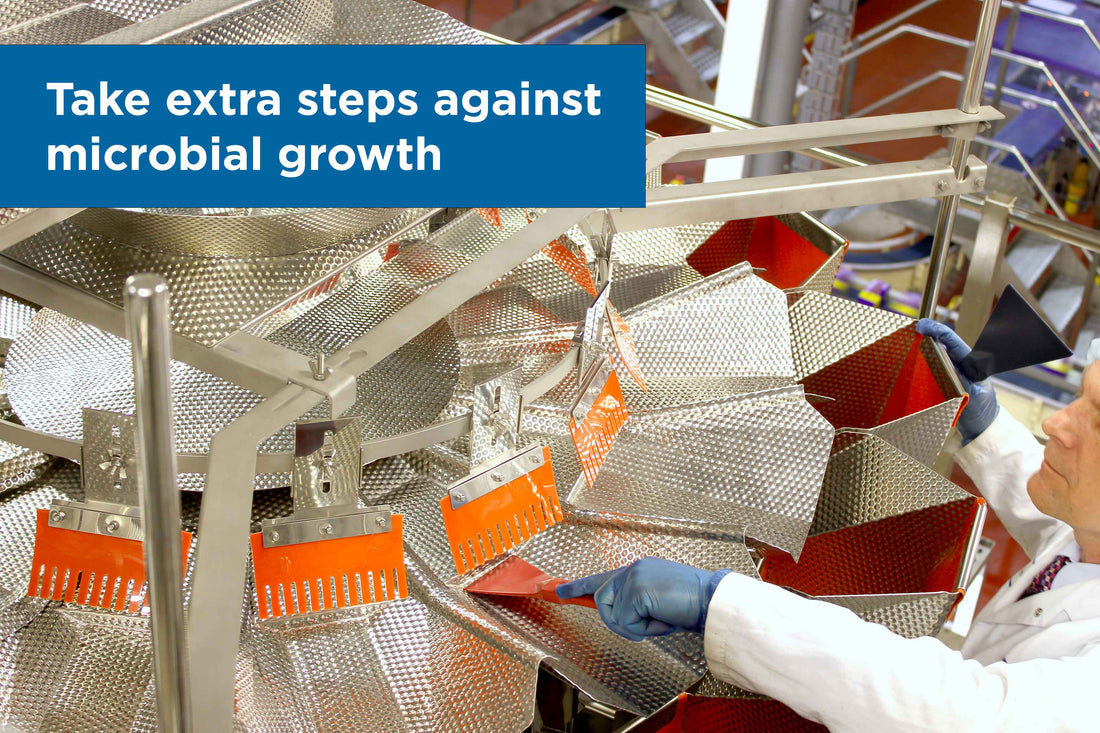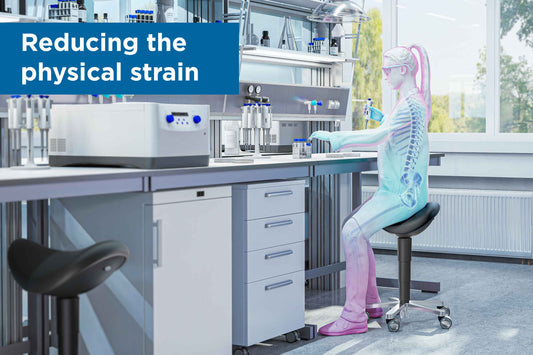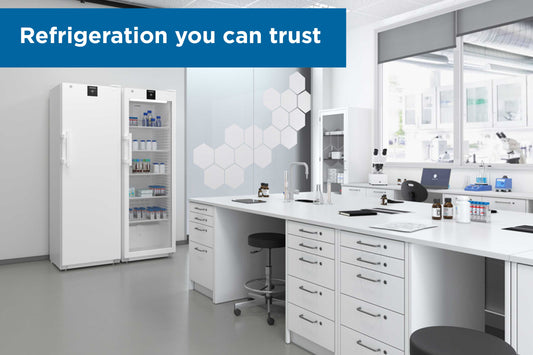Take extra steps against microbial growth and contamination by incorporating antimicrobial materials within hygienic zones – protecting both product integrity and consumer safety. Demonstrating compliance with the latest hygiene regulations, antimicrobial materials are being increasingly used for equipment, furniture and tools that are handled frequently between cleaning routines. This blog explores how antimicrobial materials play a role in controlled environments, when they should be used and how they can be used to support hygienic zoning strategies.
Why are they important & how it works
Antimicrobial materials play a crucial role in food and pharmaceutical production environments by offering an additional layer of defence against microbial contamination. These materials work by incorporating protective particles such as silver ions, copper or specialised polymers into the surface of tools and equipment. These particles actively prevent microbial growth and their lasting survival on treated surfaces. By using antimicrobial materials, businesses can continuously fight microbial activity between cleaning cycles, helping to reduce the risk of cross-contamination on tools, furniture and equipment that is touched frequently between deep cleans. The use of antimicrobial materials cannot replace deep cleaning but can be used to complement rigorous cleaning and sanitisation protocols.
Teknomek offers a range of furniture and equipment featuring antimicrobial properties including Sealwise & Trespa furniture, antimicrobial seating and stationery.
When should antimicrobial materials be used instead of stainless steel?
While stainless steel offers superior hygiene capabilities due to its durability and high chemical & corrosion resistance, companies may want to opt for antimicrobial alternatives due to their lighter weight or comfort during long-term use such as scrapers or handheld production accessories. With that being said, stainless steel remains superior in many environments – particularly in processes requiring corrosive cleaning agents and materials or extreme temperatures.

The benefit of colour coding
One of the additional benefits of antimicrobial furniture and equipment is that it can often be colour coded to assist with zoning strategies and allergen separation. This colour coded approach not only reduces the chance of cross-contamination but also aids BRCGS and HACCP compliance by demonstrating clear visual controls and well-defined hygiene practices. This visual management system is especially valuable during audits, as it provides evidence of proactive contamination prevention and systematic risk management.
Incorporating antimicrobial materials into your hygienic environments is a smart, proactive step toward enhancing hygiene, reducing contamination risk and supporting regulatory compliance. When used in conjunction with stainless steel, these materials offer continuous microbial resistance on frequently touched surfaces. Providing an opportunity to implement colour-coded systems for clear zoning and allergen control, antimicrobial equipment and furniture provide both functional and visual support for rigorous hygiene protocols. The use of antimicrobial and colour-coded solutions not only protects your products and processes but also demonstrates a strong commitment to quality and consumer safety.
If you would like to find out more about colour coded or antimicrobial equipment, please don’t hesitate to get in touch by calling our expert sales team on +44 (0)1603 788 833 or emailing mail@teknomek.co.uk.




